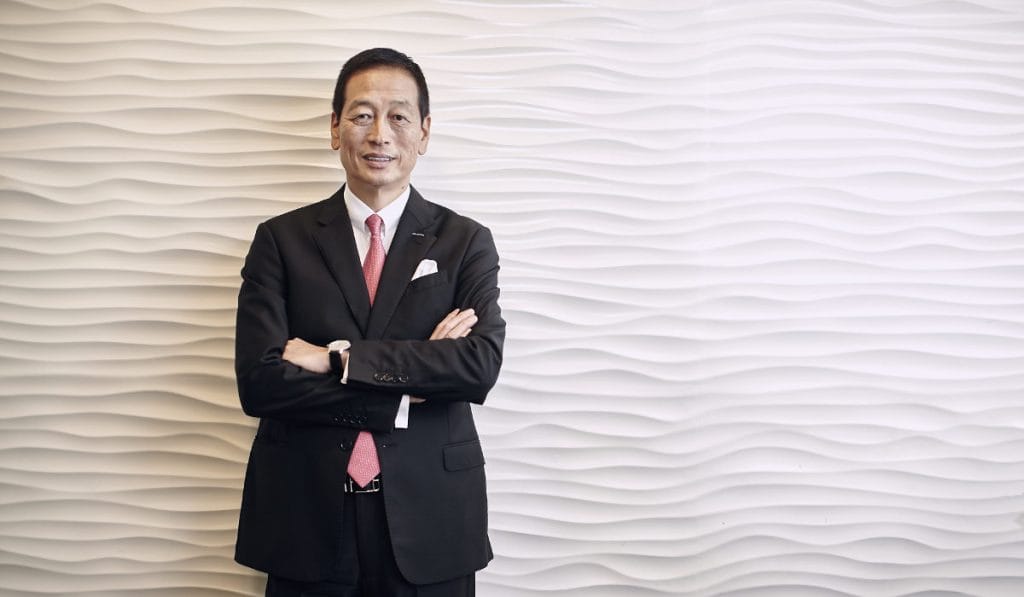In 1872, a Japanese pharmacist by the name of Arinobu Fukuhara established Shiseido, a local pharmacy located in Tokyo’s Ginza district, the very first Western-style pharmacy in the Land of the Rising Sun. It was an unprecedented move since most Japanese consumers at the time were mainly reliant on holistic medicine.
As time went on, the pharmacy gained a fervent following after the introduction of several locally made personal care and cosmetic products, including toothpaste, perfumes, facial powders, vanishing creams and soaps. By 1915, Arinobu’s son, ShinzÅ, would take over the reins by becoming the very first President of Shiseido. Little did anyone know then that Shiseido would ultimately transform into not only the largest cosmetic firm in Japan, but also one of the largest cosmetics company in the global beauty industry.
By late 2013, Shiseido revealed yet another unprecedented move when the board announced the appointment of Masahiko Uotani as the company’s new President and Group CEO. As the former CEO of Coca-Cola in Japan, the decision to appoint Uotani marked the first time in the company’s history that an outsider was brought in to take on a major leadership role. Following his appointment, Uotani proceeded to reveal his VISION 2020 strategy, which would focus on rejuvenating the company from within to enable it to become a major global player in the beauty industry.
“For me, being a global company means having a strong financial foundation so that we can reinvest in developing new brands and new businesses. We have to be profitable in order to be competitive with other global companies. Back when I first joined Shiseido, it had just over USD400 million in domestic sales. When I revealed VISION 2020, I said that our target was to increase those numbers to over USD1 billion. During the first six months of 2017, we recorded the highest sales and operating profit in the company’s history.â€
“IT’S ALL ABOUT FOSTERING GOOD RELATIONSHIPS BETWEEN PEOPLE WHILE CREATING GOOD SENSE OF COMMUNITY, WHICH IS SOMETHING THAT I FEEL IS ONE OF THE GREATEST ASPECTS OF THIS BUSINESS.”
For Uotani, another method of achieving this ambitious goal would involve embracing the opportunities that come about with change. “Japan is a very homogeneous society. In order to be a global company, we need to create a sense of diversity. This includes bringing in people who have experiences working at other companies… such as myself,†he says with a smile.
Of course, anything worth fighting for has never come easy. For Uotani, one of the biggest challenges stems from the fear of change. “In Japanese companies, there’s always a bit of a pushback when it comes to change. When I announced that we would be a global company, I also said that it was necessary to implement English as the first language at the company’s headquarters in Tokyo. Many were initially shocked; however, I’ve since discovered that around 1,700 Japanese employees have since started taking English lessons.â€
As Uotani explains, these major changes are meant to encourage the people working at Shiseido to share their ideas as well as to discuss and debate while respecting each other’s differences. “For me, this is the source of innovation and I think we’re making very good progress. It’s about changing mindsets instead of just focusing on how difficult it will be and setting yourself up for failure. People are changing and I feel really good about it.â€
Since the reveal of VISION 2020, it’s been reported that the company’s sales have steadily increased as a result of increased exports to Asia and demand from foreign tourists to Japan. “In markets such as China and Japan, there’s a huge opportunity for Japanese personal care and mass cosmetic brands, mainly because the ‘Made in Japan’ label has already been embraced by Asian consumers, which in turn gives us a strong competitive edge.â€

As a way to cater to these demands, Uotani says that the company will invest about USD900 million on the construction of two plants in Japan. “We’ll be doubling the capacity of our factory in Osaka and building a new one in the Tochigi Prefecture that will be the centre of our production for the Asia market within the next three years.â€
Asked what motivates him to focus all his time and efforts to revive this longstanding brand, Uotani shares this charming anecdote: “A couple of months after I joined, my wife decided to take lessons from a makeup artist. I asked one of our top artistes to help her out and completely forgot about it. Not too long after, she sent me a message to ask what time I’d be home after work, which she never did before. I decided to get home a little earlier and that’s when I realised she had wanted to show me the results of her makeup lessons.
“When I laid eyes on her, I told her that she looked beautiful, which is something that Japanese men don’t normally do. For me, these products also offer experiences that make people happy, which in turn makes people within their social circle happy as well. It’s all about fostering good relationships between people while creating good sense of community, which is something that I feel is one of the greatest aspects of this business.â€



